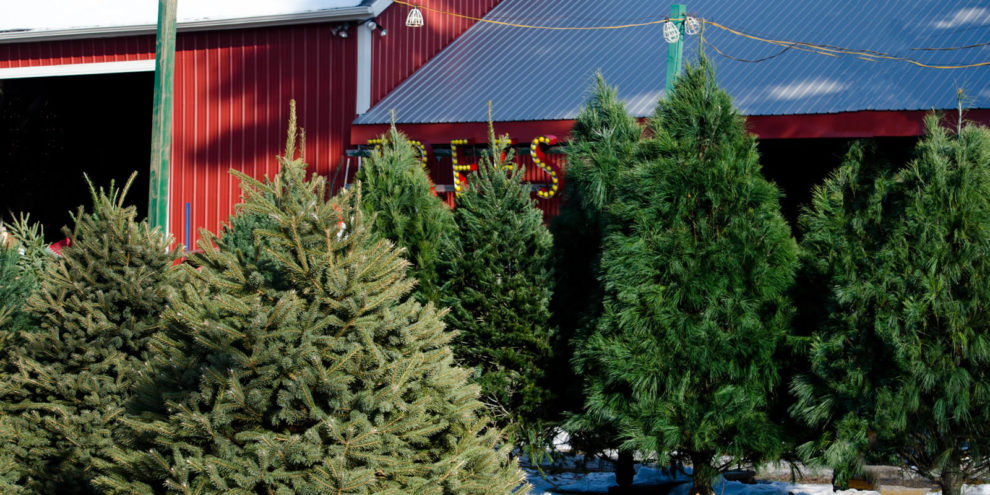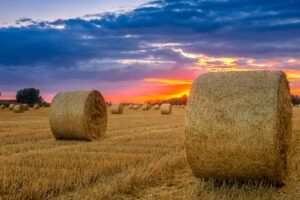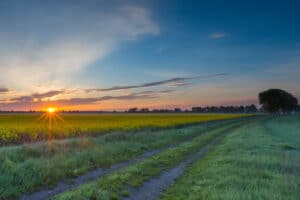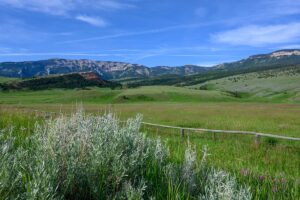National Lampoon’s Christmas Vacation is a classic holiday movie that almost every American household will watch at least once every year. I mean, is it even officially the Christmas season if you haven’t watched Clark Griswold drag his family to a Christmas tree farm to find the largest tree on the lot? While most of us have never experienced the joy of hiking for miles to cut down an inappropriately large Christmas tree, normal sized, real trees can be found on farms and lots across the country.
The Christmas tree is one of the focal points of your Christmas decorations. It’s the place where you gather with family on Christmas morning to open presents and enjoy each other’s company. Choosing between a fresh, live Christmas tree or an artificial tree can be an overwhelming process. Here at LANDTHINK, we’re all about land, conservation, wildlife and supporting local communities. That being said, we always prefer real trees to artificial. We’d like to share five reasons why you should channel your inner Clark Griswold and choose a real tree for your yuletide centerpiece.
1. Real Christmas Trees Preserve Land and Keep it Healthy
As a renewable resource, ideally planted on land that cannot support other crops, a well-managed sustainable tree farm keeps the land healthy in many ways. Purchasing a real tree can help to keep open land preserved from development, keep farmers in business, and promote conservation issues. Just like farmers that grow food crops, Christmas tree farmers are also connected to the land in a unique way and care about being responsible stewards of our land. The farmers’ own livelihood depends on the health of the soil and water. Real trees support life by absorbing carbon dioxide and other gases and emitting fresh oxygen. According to the Christmas Tree Farm Network, one acre of living Christmas trees produces the daily oxygen for 18 people.
2. Real Christmas Trees Are Sustainable
Real Christmas trees are grown on farms like other crops and are replaced after harvesting. To help keep their business going and make sure they always have healthy trees, Christmas tree farmers replace each harvested tree with 1 to 3 seedlings in preparation for future harvests. Therefore, the tree population is not reduced due to Christmas tree farming, but is actually preserved, protected, and increased.
3. Real Christmas Trees Provide Habitat for Wildlife
It takes approximately ten years for a Christmas tree to grow and harvest. During that time, the natural evergreen canopy provides a habitat that supports birds, deer, turkeys, bears, rabbits, pheasants, rodents, fox, and in some states, even elk. The tree farm shelters wildlife from the elements during the colder months.
4. Real Christmas Trees Support the Local Economy
Almost all artificial trees are imported from overseas, while we have more than 15,000 Christmas tree farms here in the United States. Christmas trees are able to be grown in all 50 states and approximately 100,000 people are employed full or part-time in the Christmas tree industry. From the farmer who raised it, to the owner of the nursery or tree farm that sold it, your purchase has a very real impact on the lives of other families.
5. Real Christmas Trees Create Family Traditions and Memories
If we learned anything from National Lampoon’s Christmas Vacation, it’s that the tradition isn’t just about having the tree, it’s about venturing out to get it, too. Choosing a real Christmas tree is the perfect weekend errand to get the whole crew in the holiday spirit. From finding the tree to decorating it at home, the whole family can take part in the activity together. Year after year, families can make finding their real Christmas tree part of their own holiday family tradition.
This content may not be used or reproduced in any manner whatsoever, in part or in whole, without written permission of LANDTHINK. Use of this content without permission is a violation of federal copyright law. The articles, posts, comments, opinions and information provided by LANDTHINK are for informational and research purposes only and DOES NOT substitute or coincide with the advice of an attorney, accountant, real estate broker or any other licensed real estate professional. LANDTHINK strongly advises visitors and readers to seek their own professional guidance and advice related to buying, investing in or selling real estate.










Add Comment